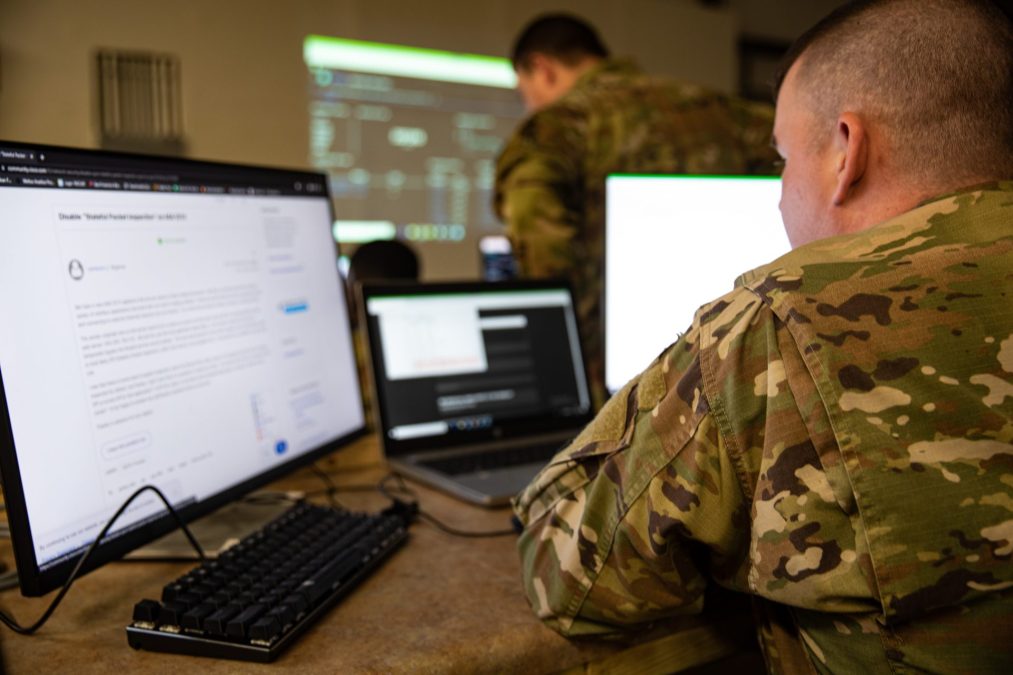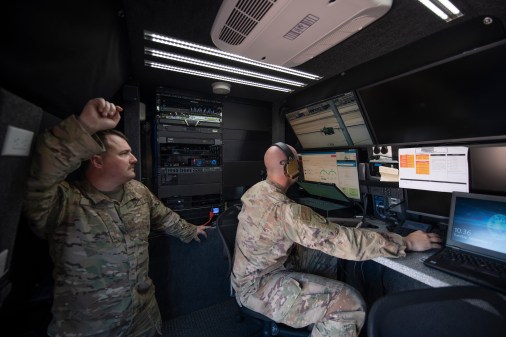Senate Armed Services Committee directs independent assessment for creating a Cyber Force

The Senate Armed Services Committee is proposing an outside assessment regarding an independent military cyber service, akin to the Army, Navy, Air Force, Marine Corps and Space Force.
According to a summary of the fiscal 2024 National Defense Authorization Act released by the committee, which it finalized yesterday, the provision directs “an independent assessment of creating a Cyber Force or further evolving the existing force development and management model.”
Committee personnel briefing reporters Friday noted there has been considerable discussion and proposals on the prospect of an independent cyber force or service both inside and outside the DOD. This assessment would be neutral and balanced and the suggestion is the DOD use the National Academy of Public Administration to do it.
The full bill’s language has not been released yet.
For over a decade, there have been rumblings that cyber needs its own service given its importance and high specialization. Within the past year, those rumblings have gotten louder with more outside groups and even members of Congress questioning military officials on the prospect of an independent cyber force.
This provision is one of the first real such salvos that opens the door to the possibility of an independent cyber service, which would be the seventh uniformed military service following the creation of the Space Force – which sits within the Department of the Air Force much like the Marine Corps sits inside the Department of the Navy – in 2019.
This provision also follows an item released by the House Armed Services Committee last week in the chairman’s mark that reflects the priorities of the committee’s chairman and includes input from other members directing the comptroller general to review the DOD’s management of cyber operations.
The reasoning behind last week’s item was to determine redundancies and duplication regarding how the services organize, train and equip the cyber warriors they present to Cybercom and, in some ways, was thought of as a companion to assessing the feasibility of an independent cyber service.
“There is a robust infrastructure within each service that establishes curriculums, funding profiles, manning rosters, upon which cyberspace operations are built. In practical terms, that means that there are four independent teams across the Army, Navy, Air Force, and Marines conceiving and implementing cyber training requirements,” a senior House Armed Services Committee aide told DefenseScoop at the time.
In prior years, lawmakers have danced around the issue of an independent cyber service, mandating the DOD include an assessment of the costs, benefits and values of establishing a uniformed cyber service in the 2022 cyber posture review, as well as a separate examination of the current cyber enterprise; how the services should man, train and equip for cyber; if a single military service should be responsible for basic, intermediate and advanced cyber training of the cyber mission force; and if the DOD should create a separate service.
Members of Congress have not been pleased with how DOD has responded to these assessments and reports — and in some cases, not providing assessments — leading to the need for an independent assessment.
The issue of an independent cyber service has started to gain steam recently given concern among former military personnel and Congress regarding readiness issues of the cyber mission force teams each service provides to U.S. Cyber Command to conduct cyber operations.
Each of the military services is responsible for providing personnel for a set number of teams to U.S. Cyber Command, which then employs those forces in operations for the other geographic combatant commands. But each service has its own identity, culture, and way of classifying and providing forces to Cybercom with many arguing that this has been to the detriment of cyber warriors given they are soldiers or airmen or sailors first, with a focus on cyber second.
Such an approach has led to readiness shortfalls across the force, most notably within the Navy, given how it has historically approached its cyber force.
Opponents of a cyber force say the current model hasn’t had enough time to prove if it works or not. The cyber mission force was officially created in 2013 — three years after the creation of Cybercom itself — and only reached full operational capability in 2018. The DOD has also authorized growth for the cyber mission force in the next five years.
Moreover, Cybercom is set to inherit enhanced budget control in October, which will give it full financial oversight and ownership of capabilities, requirements and force structure.






